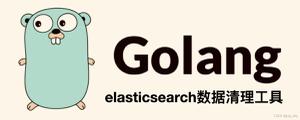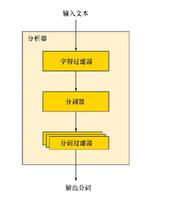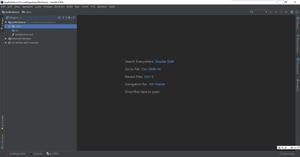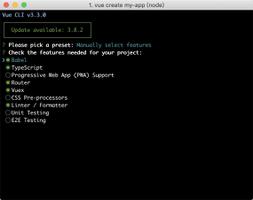ElasticSearch Nest插入/更新
我使用以下查询在弹性中创建了一个索引:
PUT public_site{
"mappings": {
"page": {
"properties": {
"url": {
"type": "string"
},
"title":{
"type": "string"
},
"body":{
"type": "string"
},
"meta_description":{
"type": "string"
},
"keywords":{
"type": "string"
},
"category":{
"type": "string"
},
"last_updated_date":{
"type": "date"
},
"source_id":{
"type":"string"
}
}
}
}
}
我想使用.net NEST库将文档插入此索引。我的问题是.net更新方法的签名对我没有任何意义。
client.Update<TDocument>(IUpdateRequest<TDocument,TPartialDocument>)Java库对我来说意义更大:
UpdateRequest updateRequest = new UpdateRequest();updateRequest.index("index");
updateRequest.type("type");
updateRequest.id("1");
updateRequest.doc(jsonBuilder()
.startObject()
.field("gender", "male")
.endObject());
client.update(updateRequest).get();
在NEST中,TDocument和TPartialDocument类来自哪里?我制作的这些C#类代表我的索引吗?
回答:
TDocument并且TPartialDocument是为POCO类型的泛型类型参数
- 在Elasticsearch(
TDocument)中表示文档,然后 TPartialDocument执行部分更新时,在Elasticsearch()中表示文档的一部分。
在完全更新的情况下,TDocument并且TPartialDocument可以指代相同的混凝土POCO类型。让我们看一些示例进行演示。
让我们使用上面定义的映射创建索引。首先,我们可以使用POCO类型表示文档
public class Page{
public string Url { get; set; }
public string Title { get; set; }
public string Body { get; set; }
[String(Name="meta_description")]
public string MetaDescription { get; set; }
public IList<string> Keywords { get; set; }
public string Category { get; set; }
[Date(Name="last_updated_date")]
public DateTimeOffset LastUpdatedDate { get; set; }
[String(Name="source_id")]
public string SourceId { get; set; }
}
默认情况下,当NEST序列化POCO属性时,它使用驼峰式命名约定。由于您的索引具有某些属性(例如)的"last_updated_date"大写字母,我们可以覆盖NEST将该名称序列化为using属性的名称。
接下来,让我们创建要使用的客户端
var pool = new SingleNodeConnectionPool(new Uri("http://localhost:9200"));var pagesIndex = "pages";
var connectionSettings = new ConnectionSettings(pool)
.DefaultIndex(pagesIndex)
.PrettyJson()
.DisableDirectStreaming()
.OnRequestCompleted(response =>
{
// log out the request
if (response.RequestBodyInBytes != null)
{
Console.WriteLine(
$"{response.HttpMethod} {response.Uri} \n" +
$"{Encoding.UTF8.GetString(response.RequestBodyInBytes)}");
}
else
{
Console.WriteLine($"{response.HttpMethod} {response.Uri}");
}
Console.WriteLine();
// log out the response
if (response.ResponseBodyInBytes != null)
{
Console.WriteLine($"Status: {response.HttpStatusCode}\n" +
$"{Encoding.UTF8.GetString(response.ResponseBodyInBytes)}\n" +
$"{new string('-', 30)}\n");
}
else
{
Console.WriteLine($"Status: {response.HttpStatusCode}\n" +
$"{new string('-', 30)}\n");
}
});
var client = new ElasticClient(connectionSettings);
连接设置的配置方式对开发过程很有帮助。
DefaultIndex()-默认索引已配置为"pages"。如果没有在请求上传递任何显式索引名,并且无法为POCO推断出索引名,则将使用默认索引。PrettyJson()-美化(即缩进)json请求和响应。这对于查看正在向Elasticsearch发送和接收的内容很有用。DisableDirectStreaming()-默认情况下,NEST将POCO序列化到请求流,并从响应流反序列化响应类型。禁用此直接流将在内存流中缓冲请求和响应字节,使我们可以将其注销OnRequestCompleted()OnRequestCompleted()-在收到响应后调用。这使我们可以在开发过程中注销请求和响应。
2、3和4在开发过程中很有用,但会带来一些性能开销,因此您可以决定在生产中不使用它们。
现在,让我们使用页面映射创建索引
// delete the index if it exists. Useful for demo purposes so that// we can re-run this example.
if (client.IndexExists(pagesIndex).Exists)
client.DeleteIndex(pagesIndex);
// create the index, adding the mapping for the Page type to the index
// at the same time. Automap() will infer the mapping from the POCO
var createIndexResponse = client.CreateIndex(pagesIndex, c => c
.Mappings(m => m
.Map<Page>(p => p
.AutoMap()
)
)
);
查看自动映射文档,以获取有关如何控制POCO类型映射的更多详细信息。
索引新的页面类型很简单
// create a sample Pagevar page = new Page
{
Title = "Sample Page",
Body = "Sample Body",
Category = "sample",
Keywords = new List<string>
{
"sample",
"example",
"demo"
},
LastUpdatedDate = DateTime.UtcNow,
MetaDescription = "Sample meta description",
SourceId = "1",
Url = "/pages/sample-page"
};
// index the sample Page into Elasticsearch.
// NEST will infer the document type (_type) from the POCO type,
// by default it will camel case the POCO type name
var indexResponse = client.Index(page);
如果文档不存在,则对文档建立索引将创建该文档;如果文档不存在,则将覆盖现有文档。Elasticsearch具有乐观的并发控制,可用于控制它在不同条件下的行为。
我们可以使用这些Update方法来更新文档,但首先要介绍一些背景知识。
我们可以通过指定索引,类型和ID从Elasticsearch获取文档。NEST使此操作稍微容易些,因为我们可以从POCO推断所有这些信息。创建映射时,我们没有Id在POCO上指定属性;如果NEST看到一个名为的属性Id,它将使用它作为文档的ID,但是由于我们没有该属性,因此这不是问题,因为Elasticsearch会为该文档生成一个ID并将其放入文档元数据中。但是,由于文档元数据与源文档是分开的,因此这可能会使作为POCO类型的文档建模更加棘手(但并非没有可能)。对于给定的响应,我们将可以通过元数据访问文档的ID,并可以通过_source领域。我们可以在应用程序中将id与我们的源结合起来。
解决这个问题的一种更简单的方法是在POCO上有一个ID。我们可以Id在POCO上指定一个属性,该属性将用作文档的ID,但是Id如果我们不想调用该属性,则不必调用该属性,如果需要,我们需要告诉NEST属性代表ID。这可以通过属性来完成。假设这SourceId是一个Page实例的唯一ID
,请使用ElasticsearchTypeAttribute
IdProperty属性来指定它。也许我们不应该也分析此字符串而是逐字索引它,我们也可以通过Index属性上的属性来控制它
[ElasticsearchType(IdProperty = nameof(SourceId))]public class Page
{
public string Url { get; set; }
public string Title { get; set; }
public string Body { get; set; }
[String(Name="meta_description")]
public string MetaDescription { get; set; }
public IList<string> Keywords { get; set; }
public string Category { get; set; }
[Date(Name="last_updated_date")]
public DateTimeOffset LastUpdatedDate { get; set; }
[String(Name="source_id", Index=FieldIndexOption.NotAnalyzed)]
public string SourceId { get; set; }
}
有了这些之后,我们将需要像以前一样重新创建索引,以使这些更改反映在映射中,并且NEST可以在为Page实例建立索引时使用此配置。
现在,返回更新:)我们可以从Elasticsearch获取文档,在应用程序中对其进行更新,然后对其重新编制索引
var getResponse = client.Get<Page>("1");var page = getResponse.Source;
// update the last updated date
page.LastUpdatedDate = DateTime.UtcNow;
var updateResponse = client.Update<Page>(page, u => u.Doc(page));
第一个参数是我们要获取的文档的ID,可以由NEST从Page实例中推断出该ID 。由于我们将 整个
文档传递回此处,因此我们可以使用.Index()代替Update(),因为我们正在更新所有字段
var indexResponse = client.Index(page);但是,由于我们只想更新LastUpdatedDate,而必须从Elasticsearch中获取文档,在应用程序中对其进行更新,然后将文档发送回Elasticsearch是很多工作。我们只可以LastUpdatedDate使用
部分 文档来发送更新到Elasticsearch 。C#匿名类型在这里真的很有用
// model our partial document with an anonymous type. // Note that we need to use the snake casing name
// (NEST will still camel case the property names but this
// doesn't help us here)
var lastUpdatedDate = new
{
last_updated_date = DateTime.UtcNow
};
// do the partial update.
// Page is TDocument, object is TPartialDocument
var partialUpdateResponse = client.Update<Page, object>("1", u => u
.Doc(lastUpdatedDate)
);
如果我们需要使用乐观并发控制 RetryOnConflict(int)
var partialUpdateResponse = client.Update<Page, object>("1", u => u .Doc(lastUpdatedDate)
.RetryOnConflict(1)
);
进行部分更新后,Elasticsearch将获取文档,应用部分更新,然后为更新后的文档建立索引;如果文档在获取和更新之间更改,Elasticsearch将基于再次重试RetryOnConflict(1)。
希望有帮助:)
以上是 ElasticSearch Nest插入/更新 的全部内容, 来源链接: utcz.com/qa/425298.html







